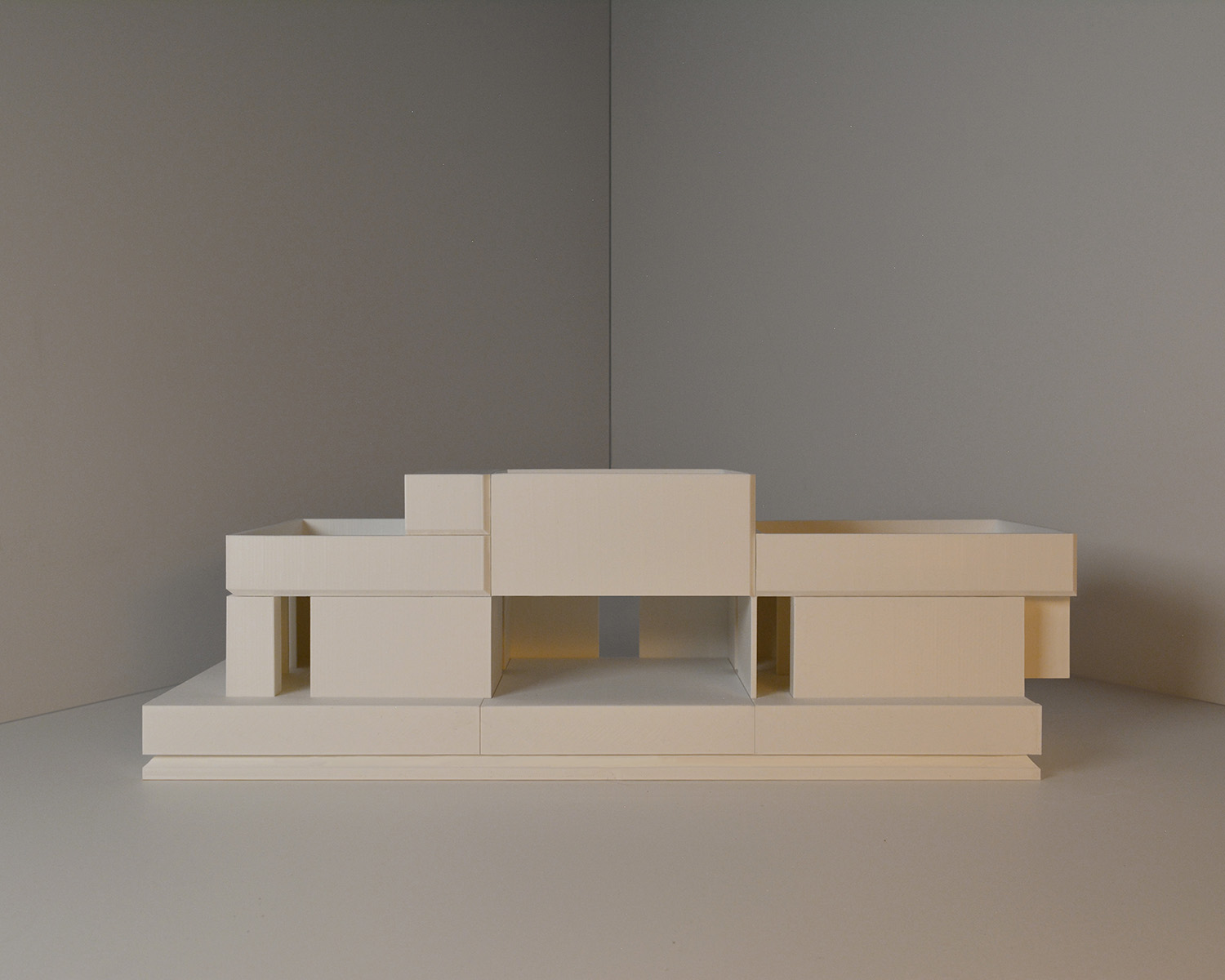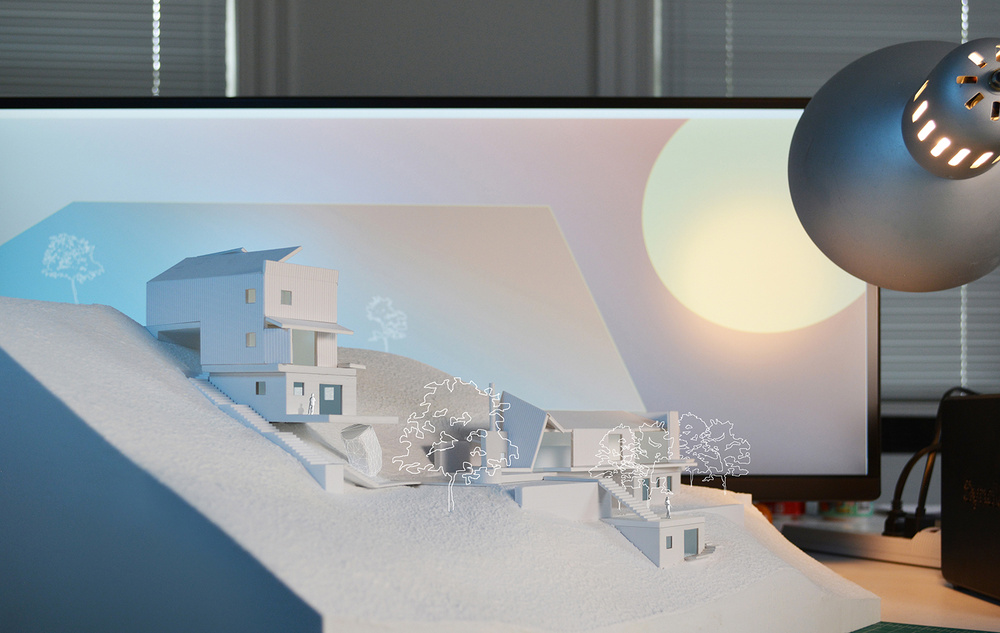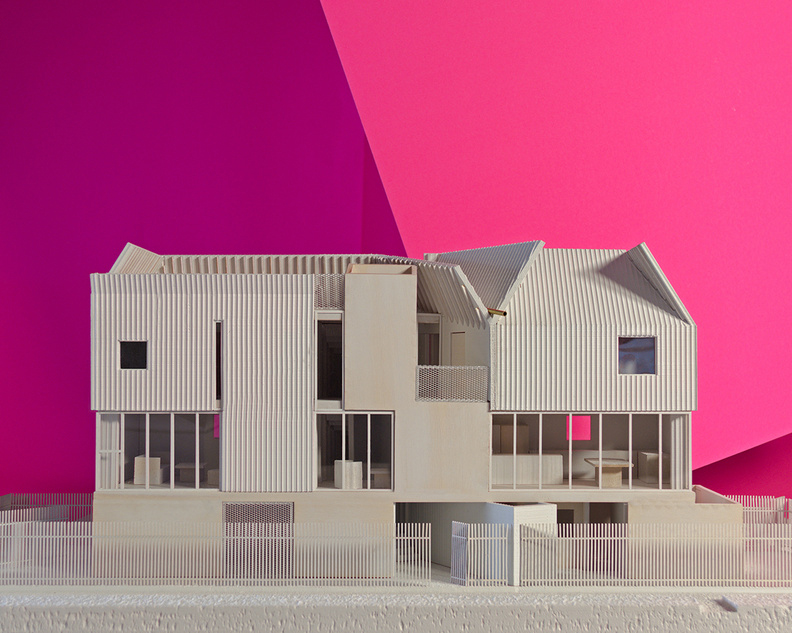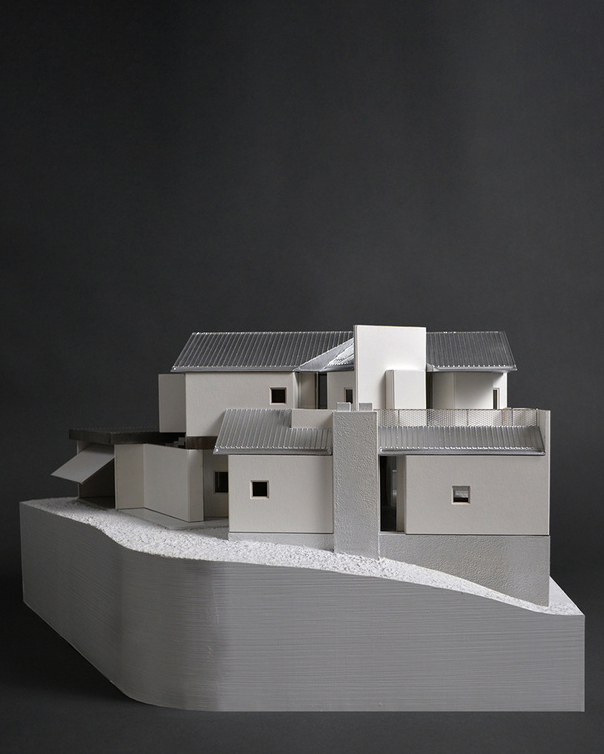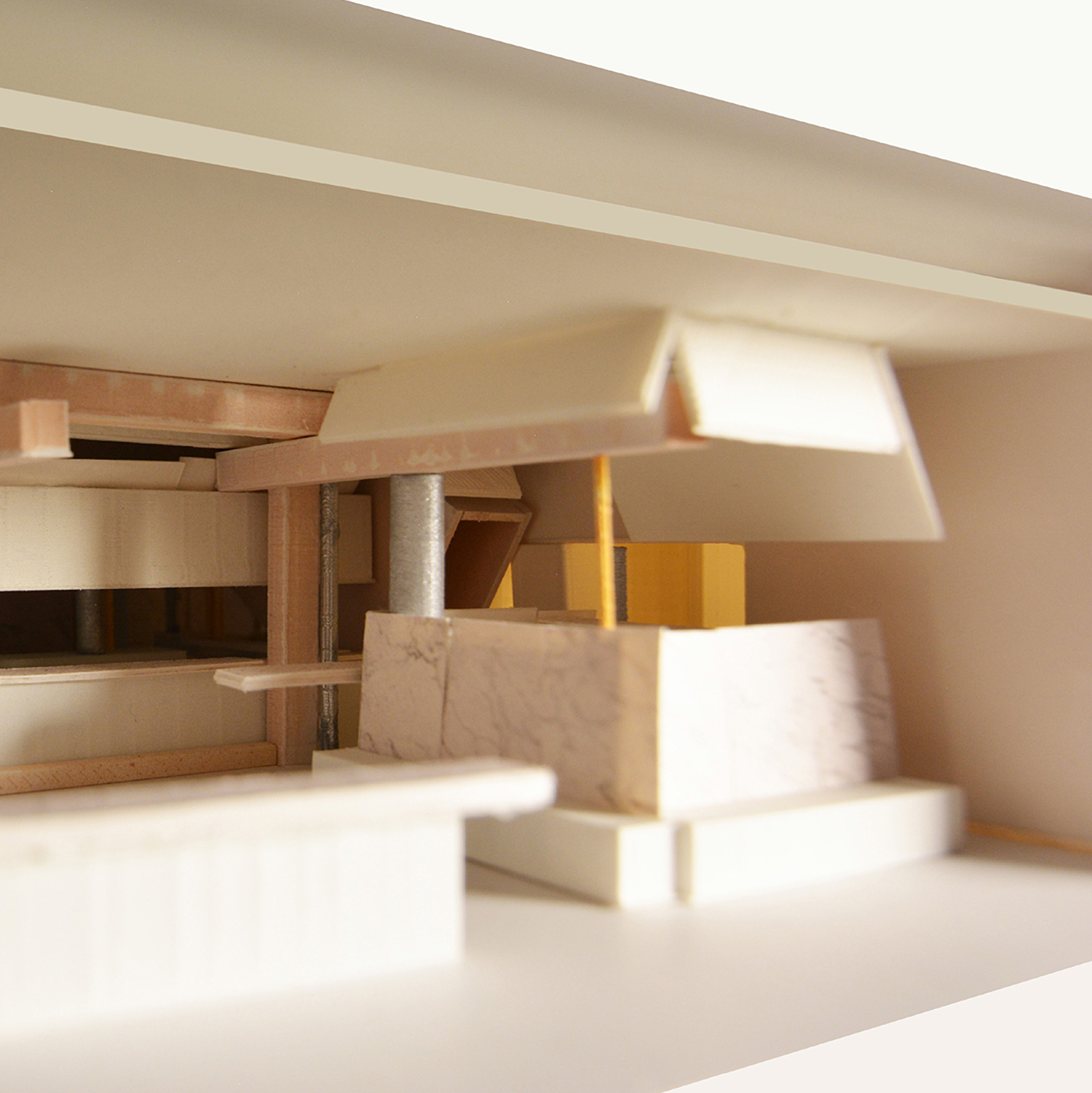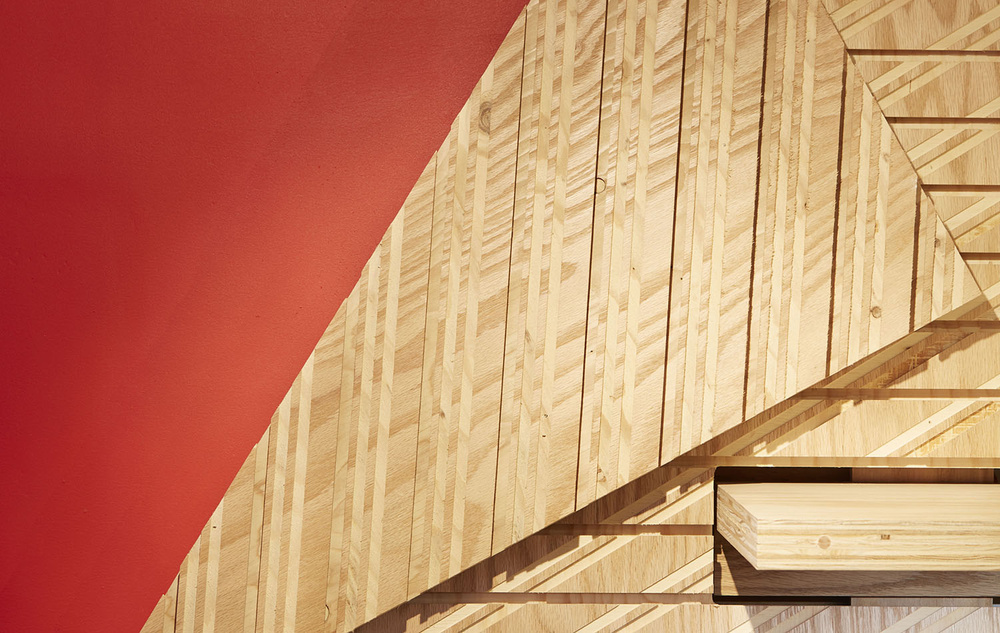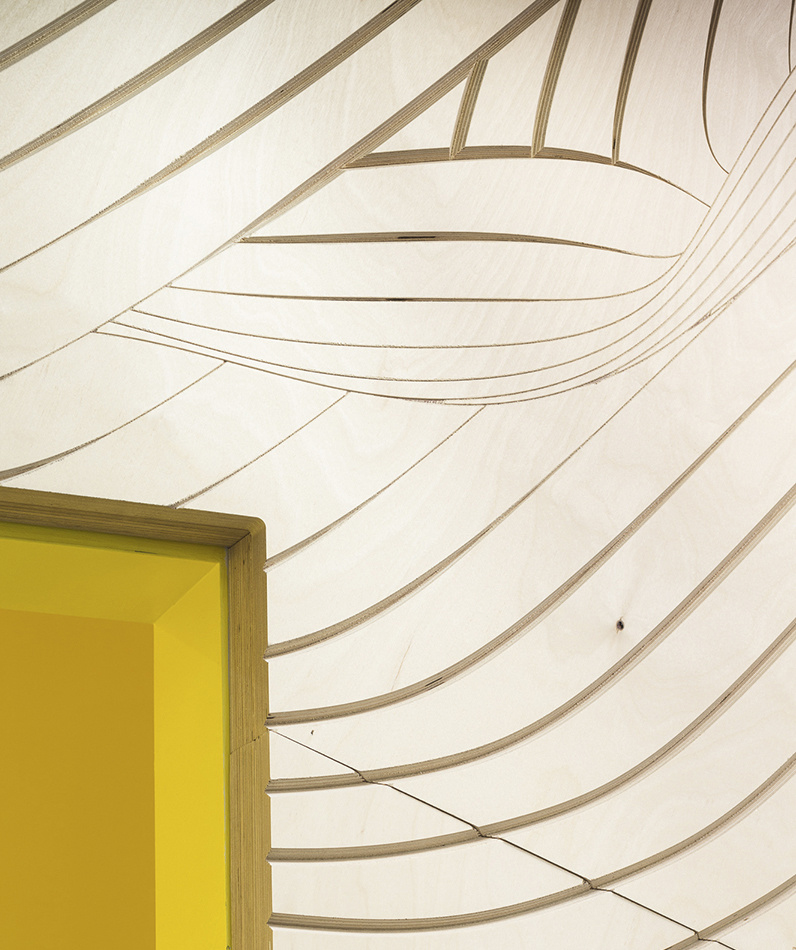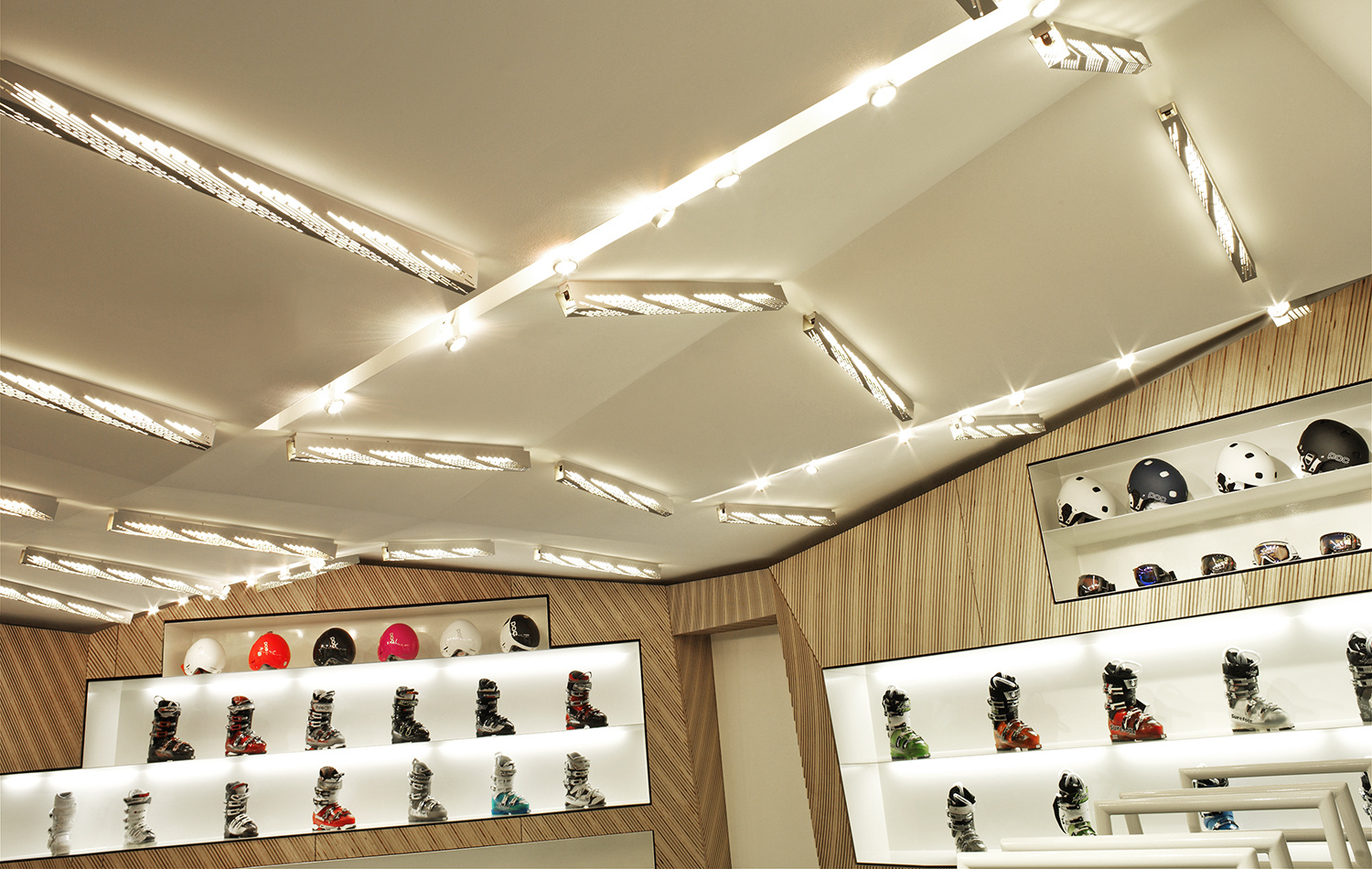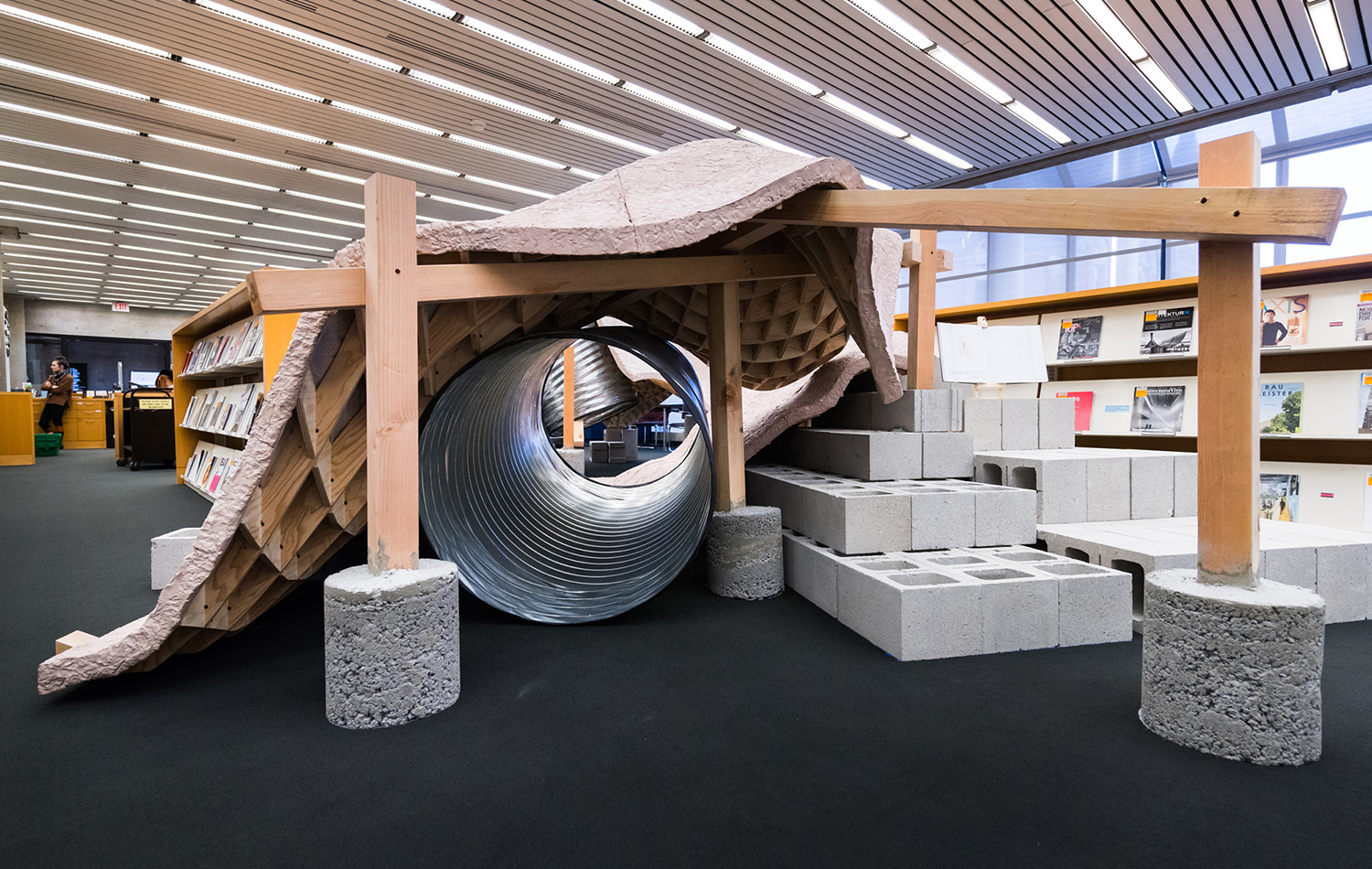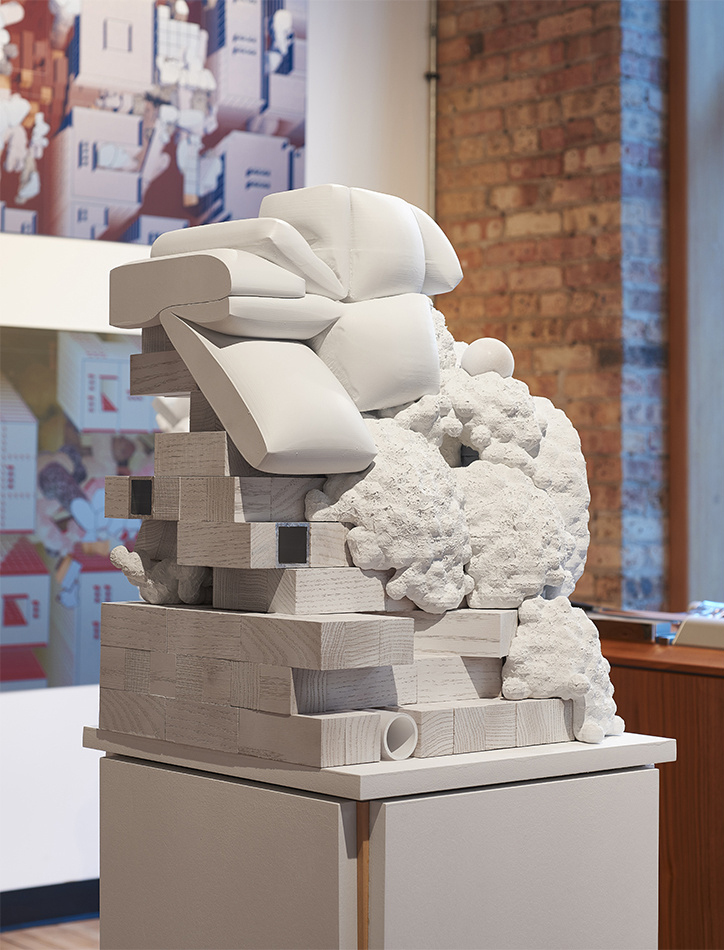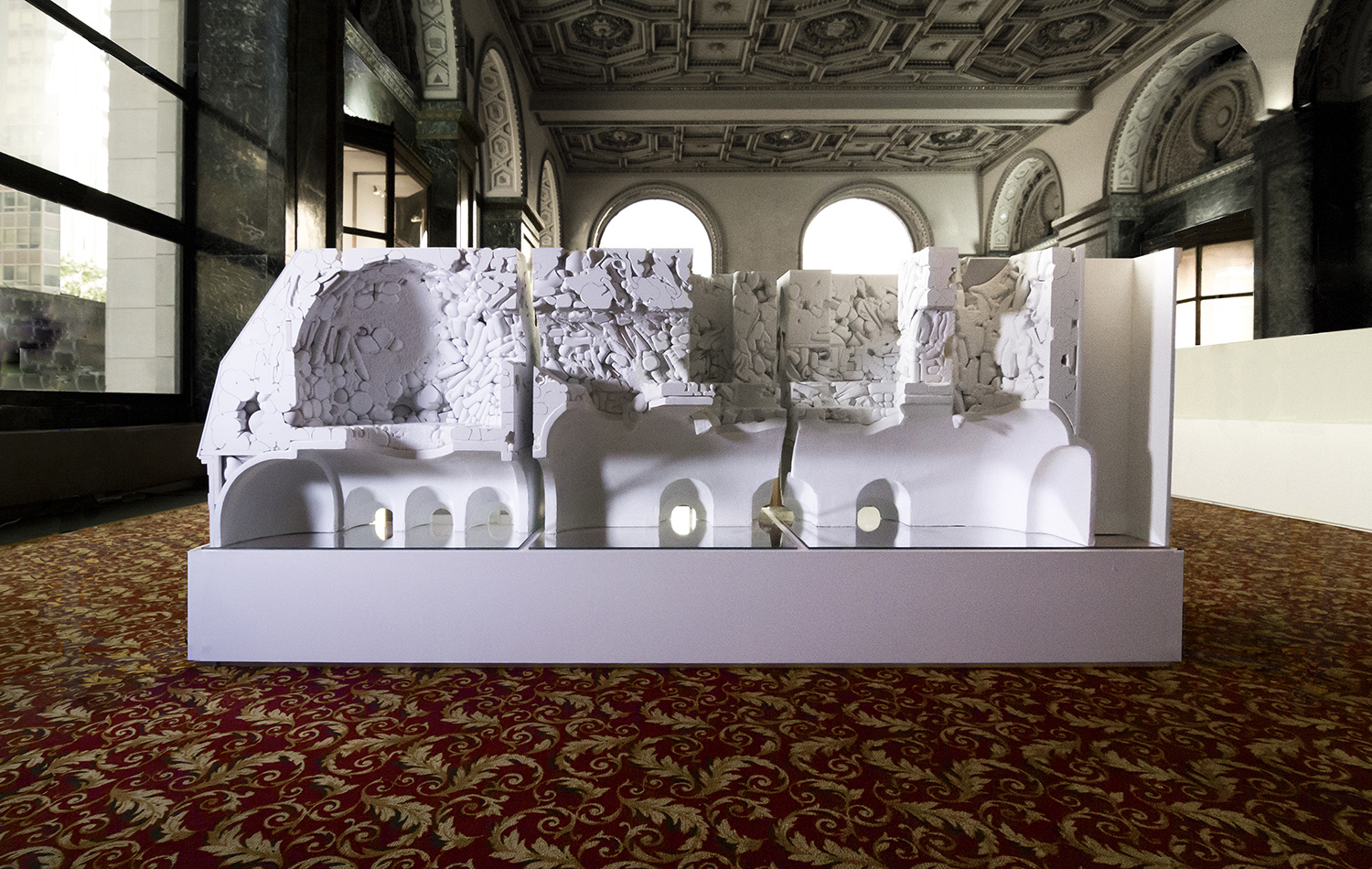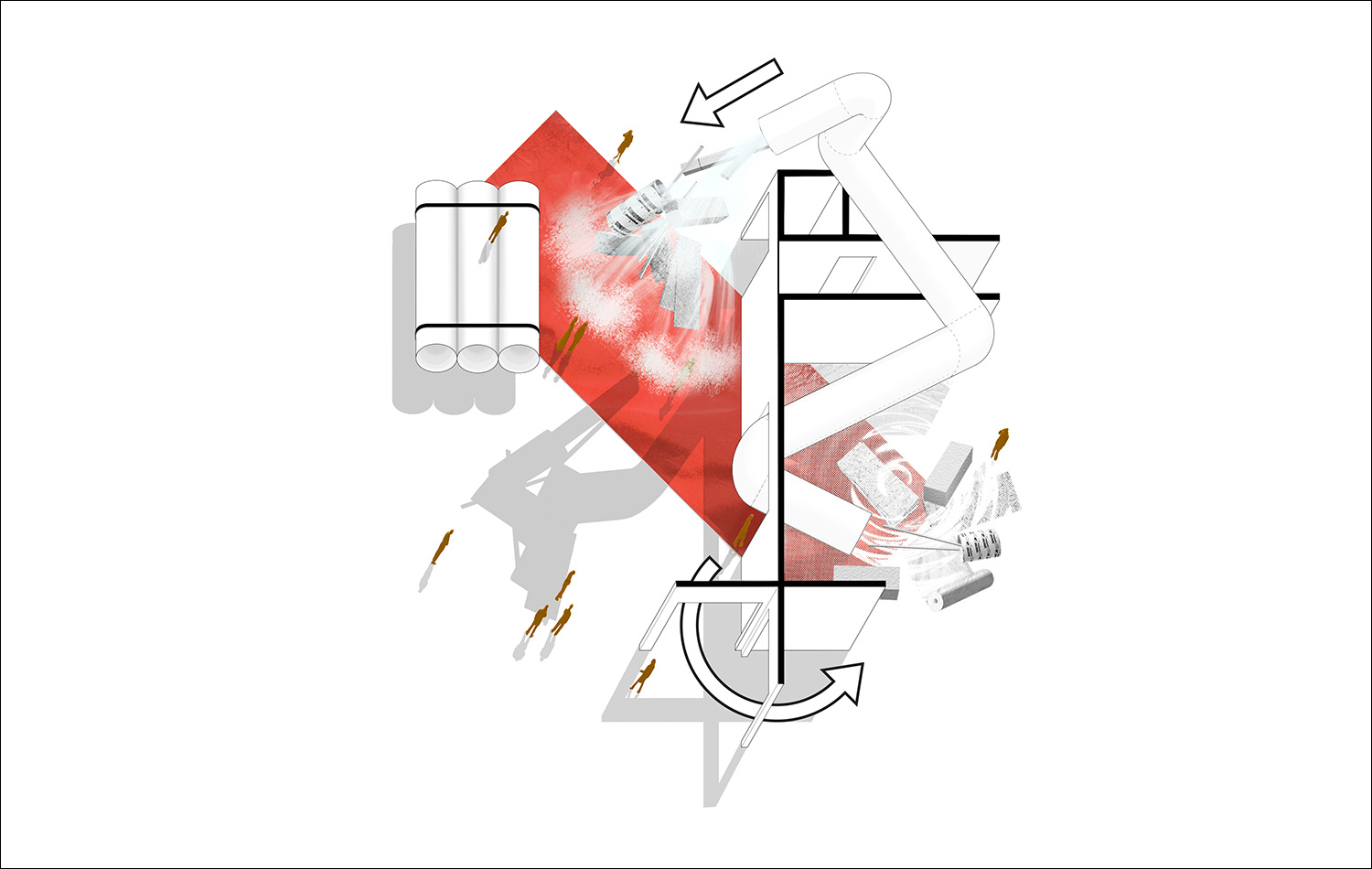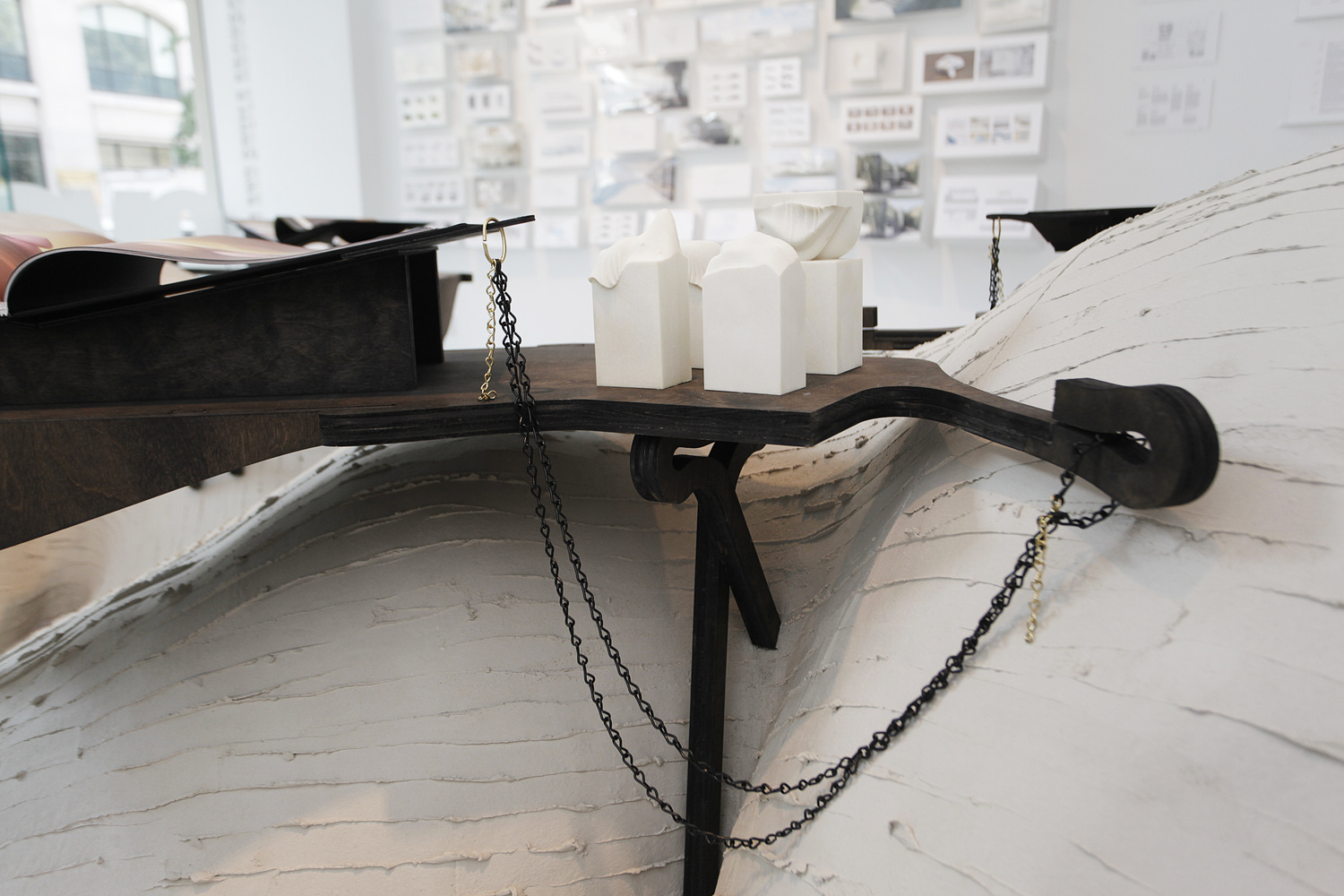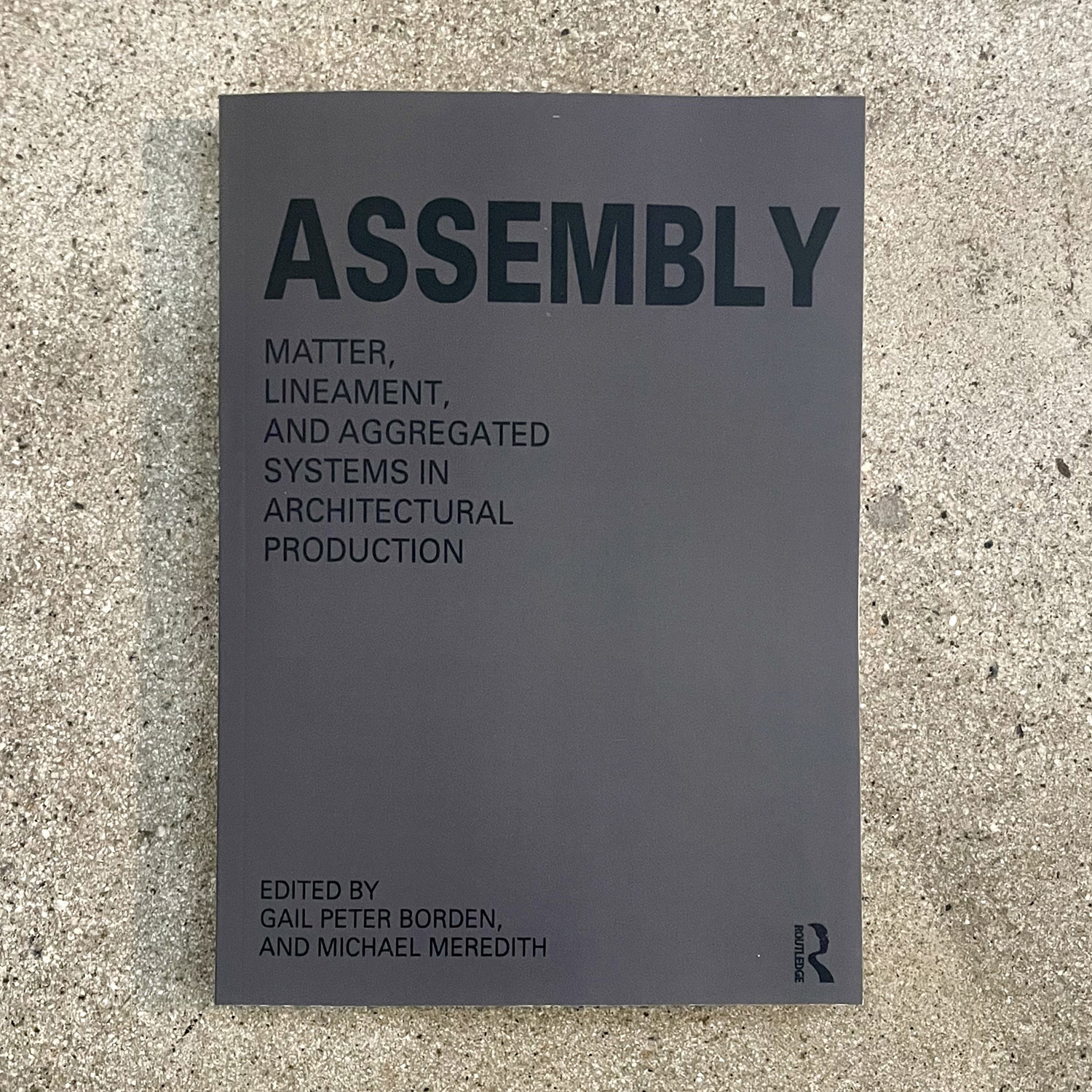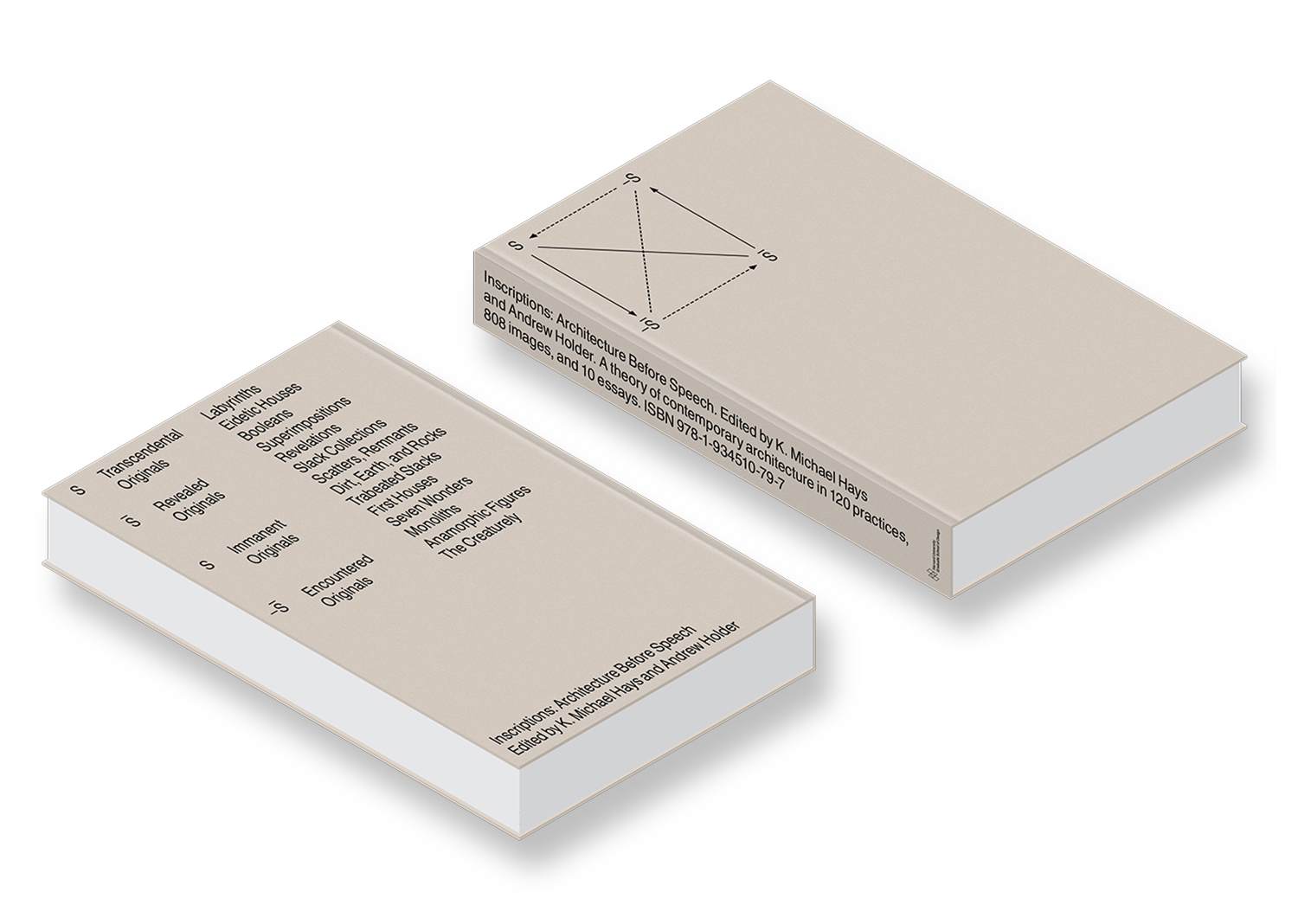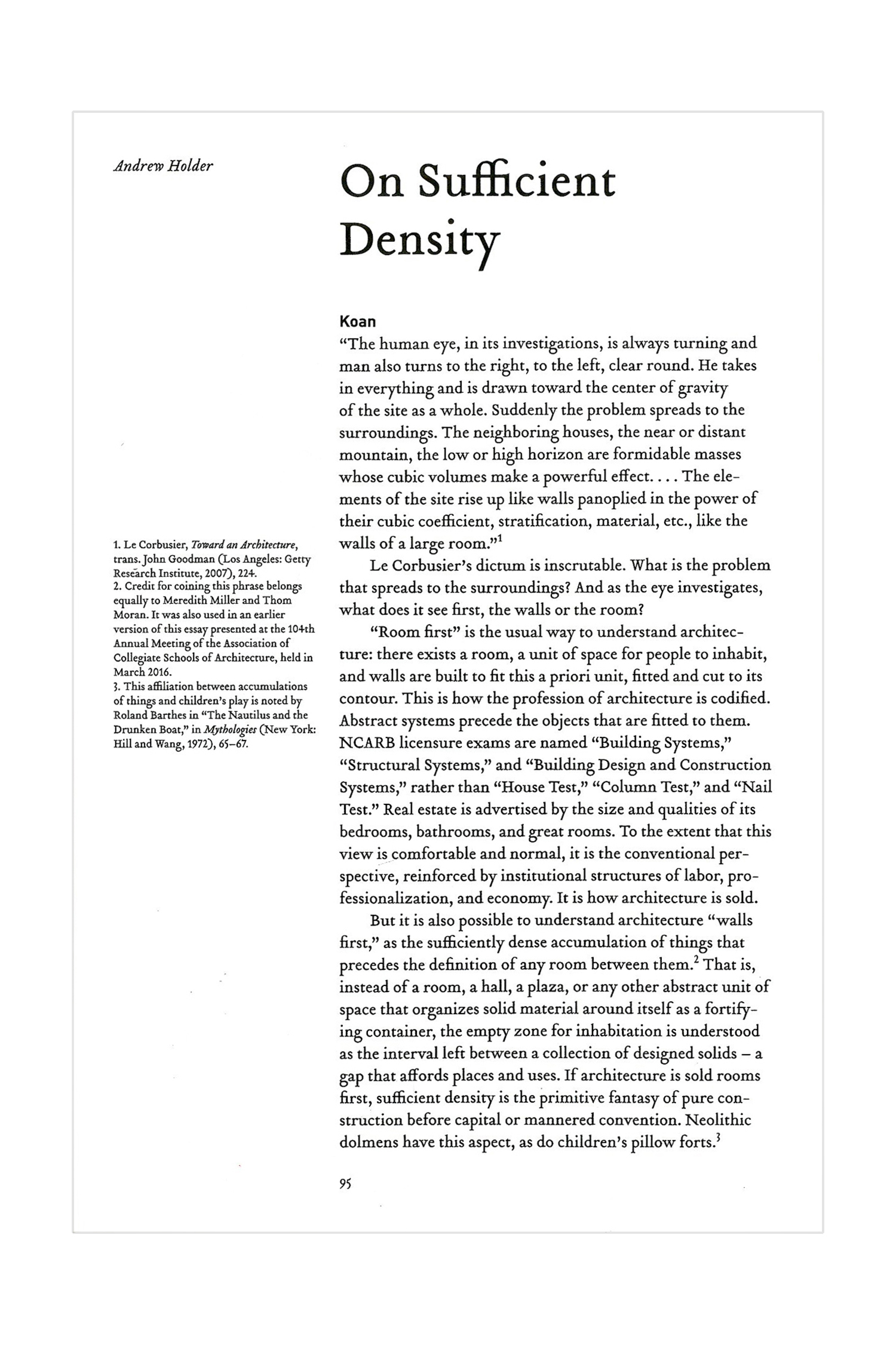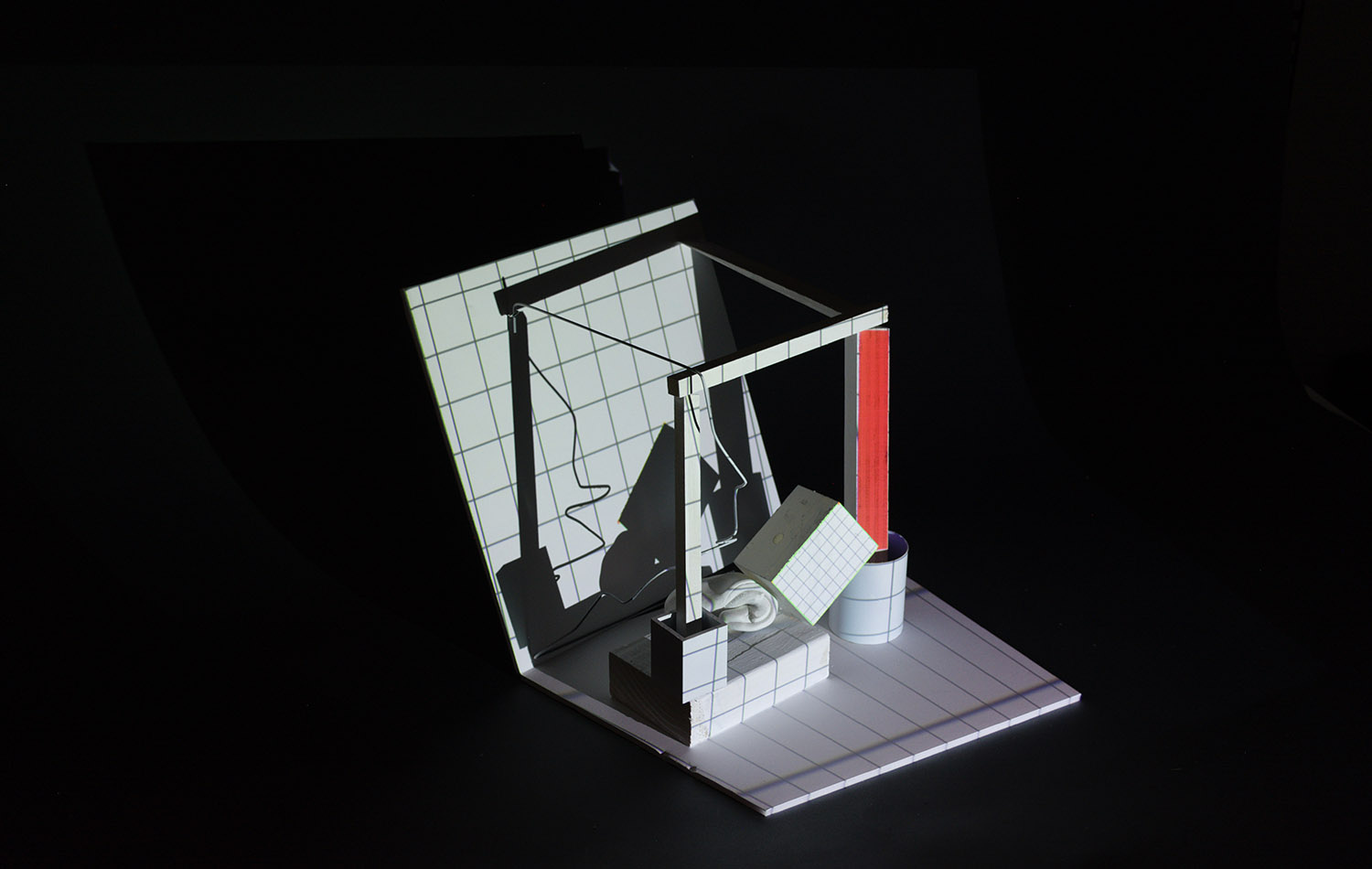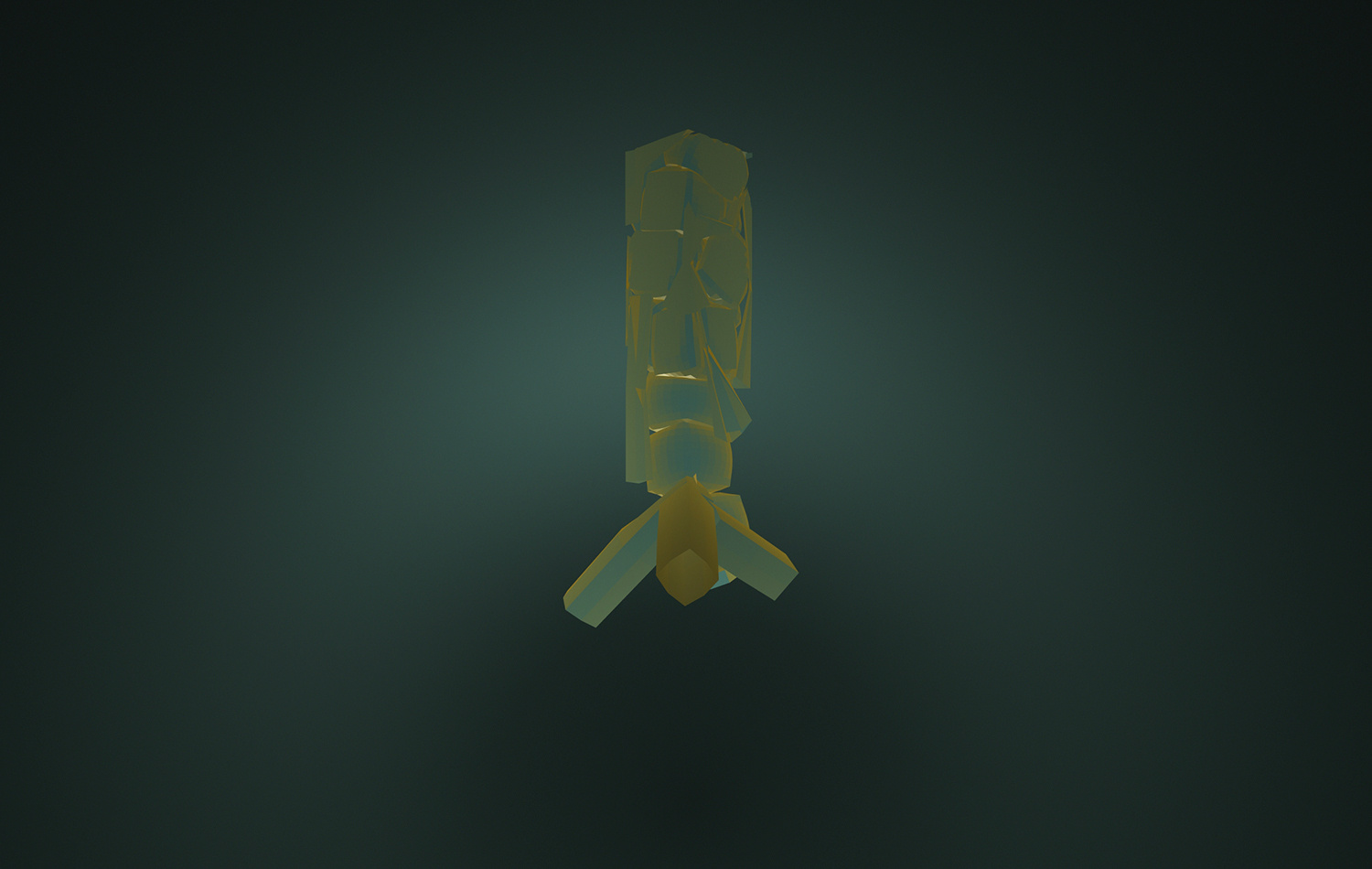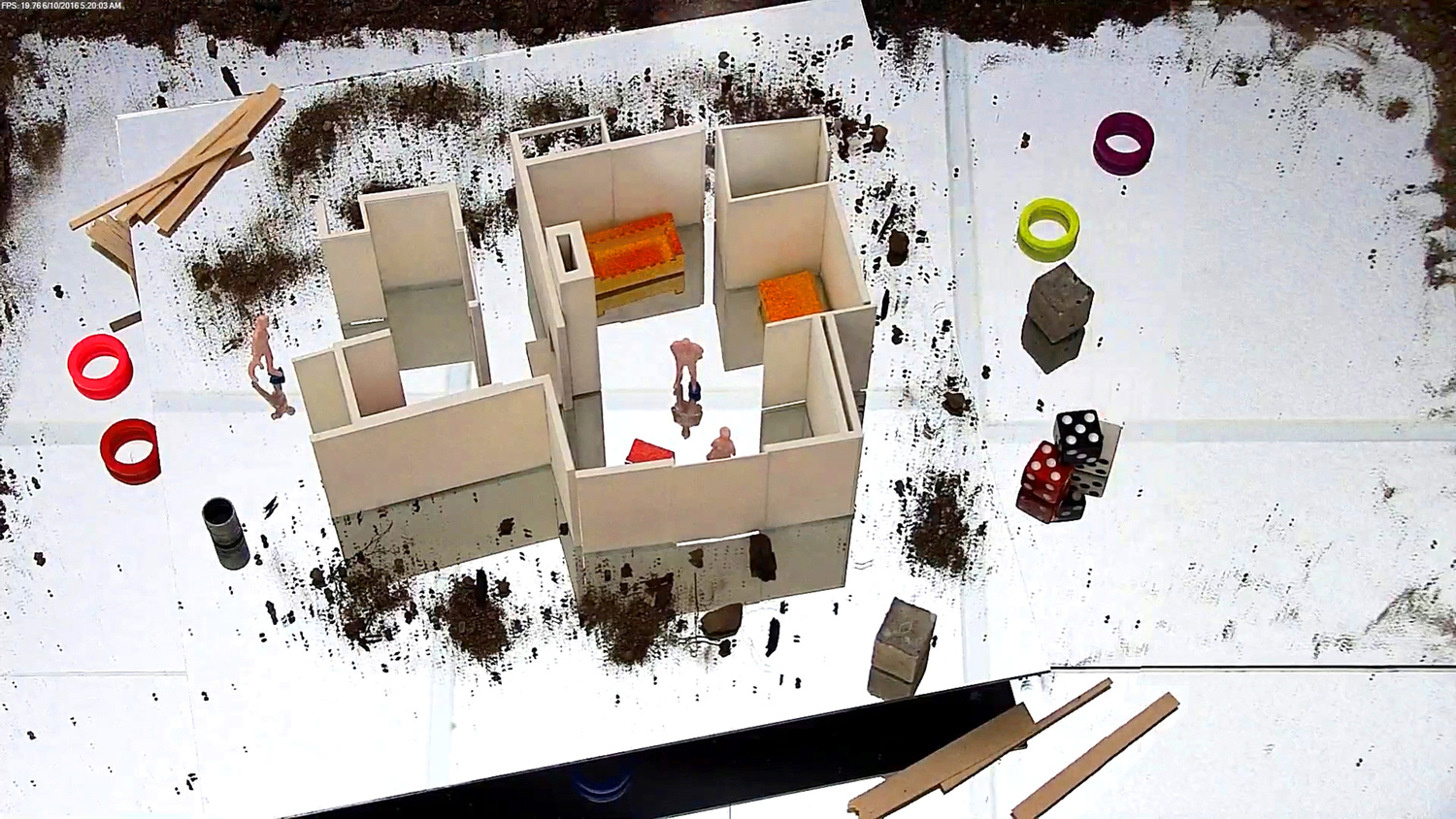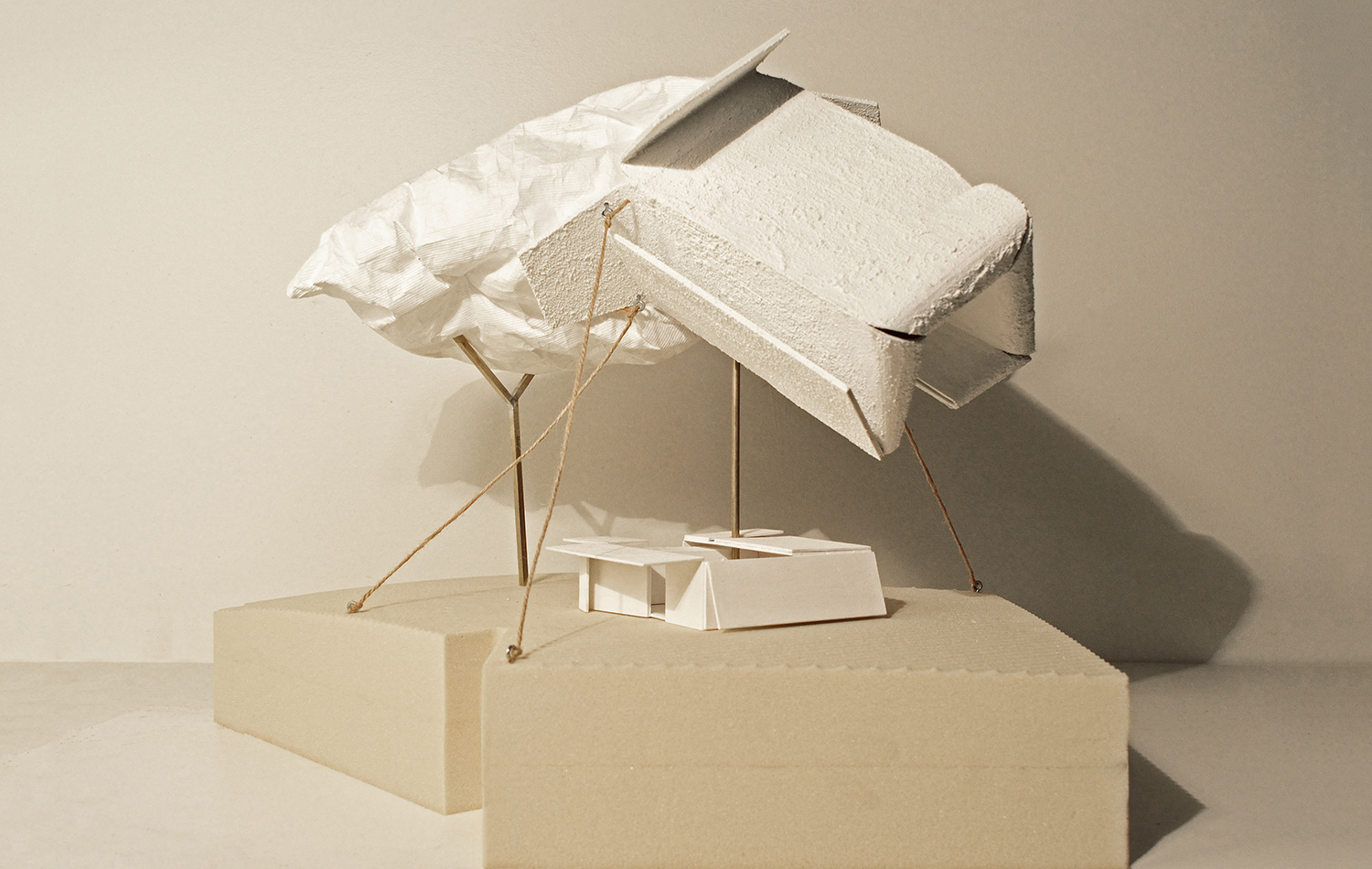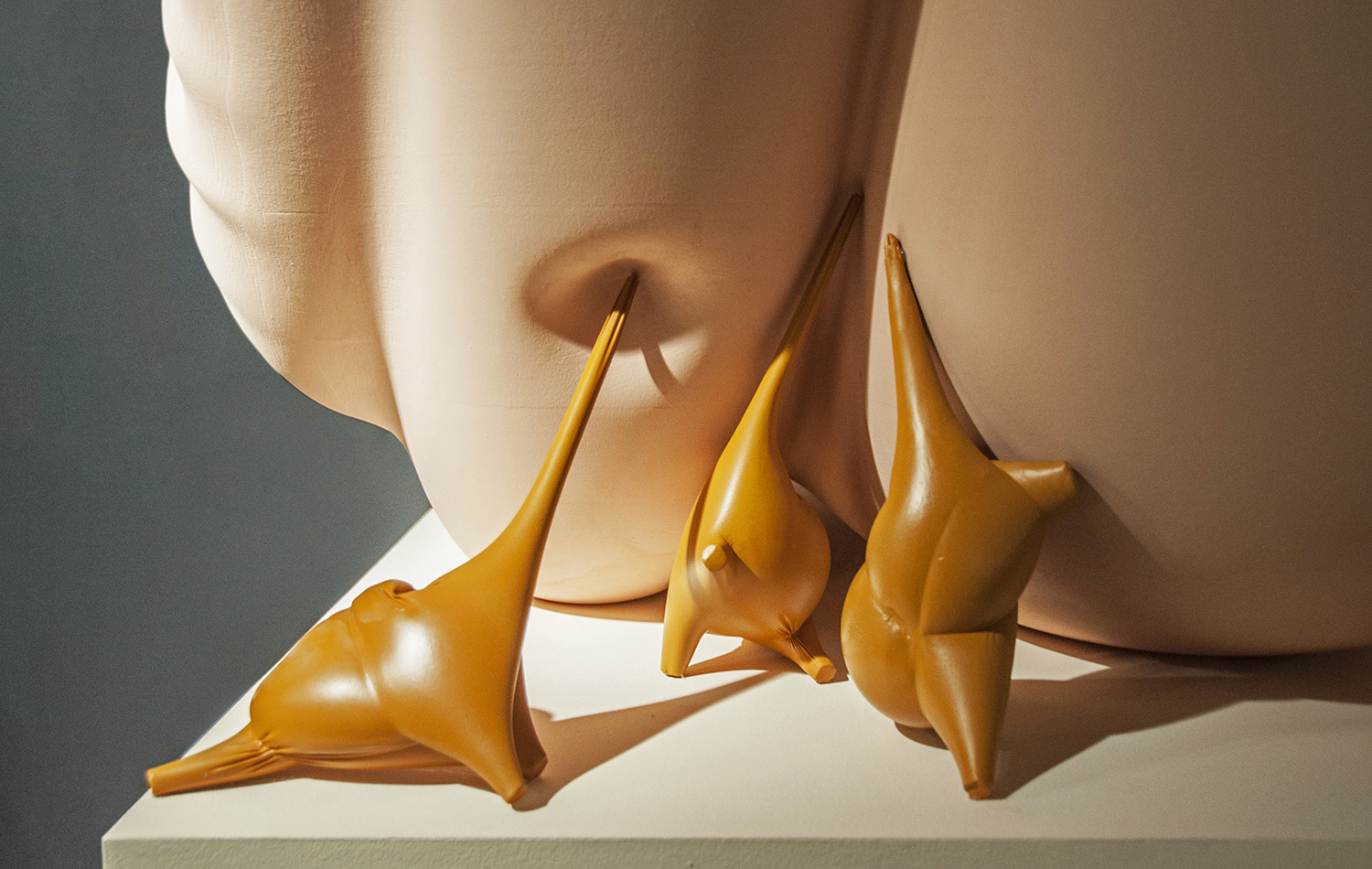In and Out of Boxes
Location
Boston, MA
Year
2023
Status
Complete
Boston, MA
Year
2023
Status
Complete
Project Lead
Zane Sloan
Project Team
Stud-IO
Nabil Davidson
Adam Cardenas
Zane Sloan
Project Team
Stud-IO
Nabil Davidson
Adam Cardenas
The construction technology company Stud-IO asked us to design a demonstration piece for a conference on new techniques in light gauge steel framing. The request was that we design something deliberately hard to build that would be both beautiful and a demonstration in the latest techniques of assembly.

Our response was to design a stack of boxes. It seemed to us that the tectonic of light gauge steel is often used to make a particular kind of box, where architecture is more or less analogous to a six-sided cardboard container.
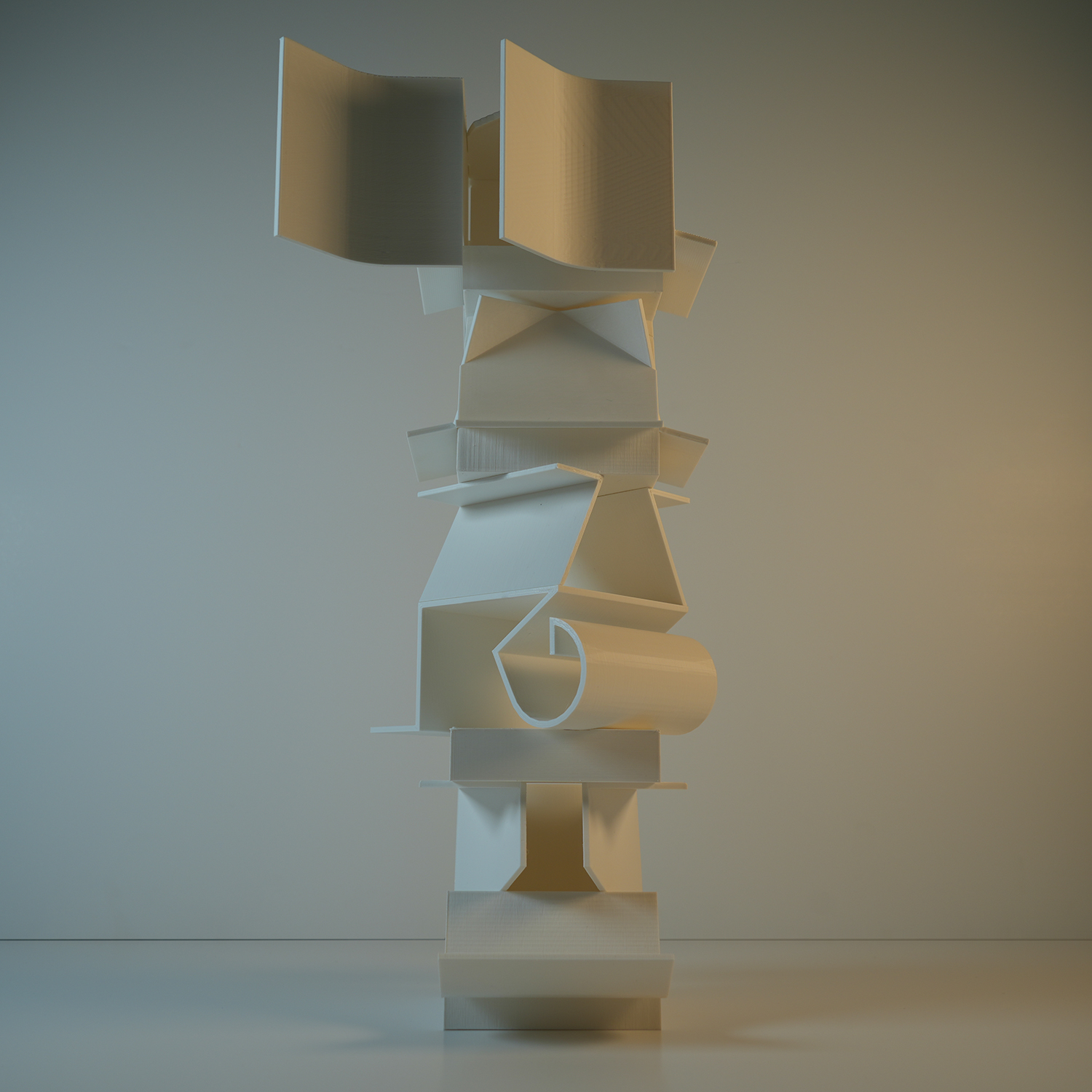




Both are hollow. Both have a high ratio of surface area to volume. And both have a structural core concealed behind flat exterior surfaces.

By working with the box as a repeating, stacked module, we could push the limits of construction technique in two ways. First, an irregular stack with eccentric loads would require Stud-IO to design complex patterns of steel reinforcement to resist deformation, even in areas that looked normal and “square.”


Second, by designing every other level in the stack as a partially unfolded box, with wrinkles and curled parts, we could push techniques of manufacture to the limits of tolerance for folding and bending. The folds of course further complicated the structural scenario, and required Stud-IO to develop what we thought were strange and beautiful corner details and patterns to densify the surfaces.
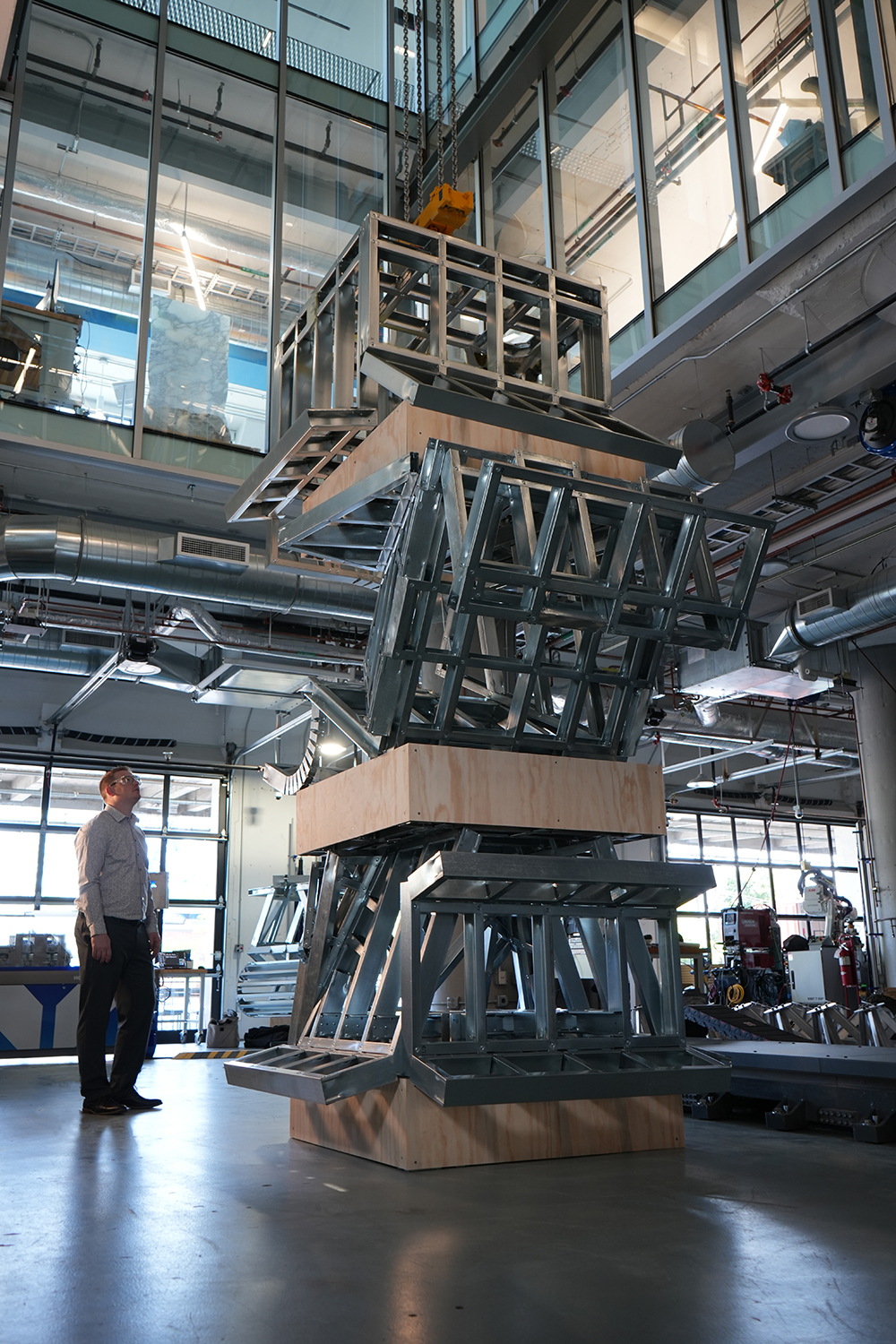
We enjoyed that the unfolded boxes started to read anthropomorphically. Each starts to look as though it has been theatrically unfolded and re-folded to support the weight of others above it. The stories told anthropomorphically in this way through the theatrics of form sometimes align with the real path of forces through the piece, and at other, more interesting moments, do not.


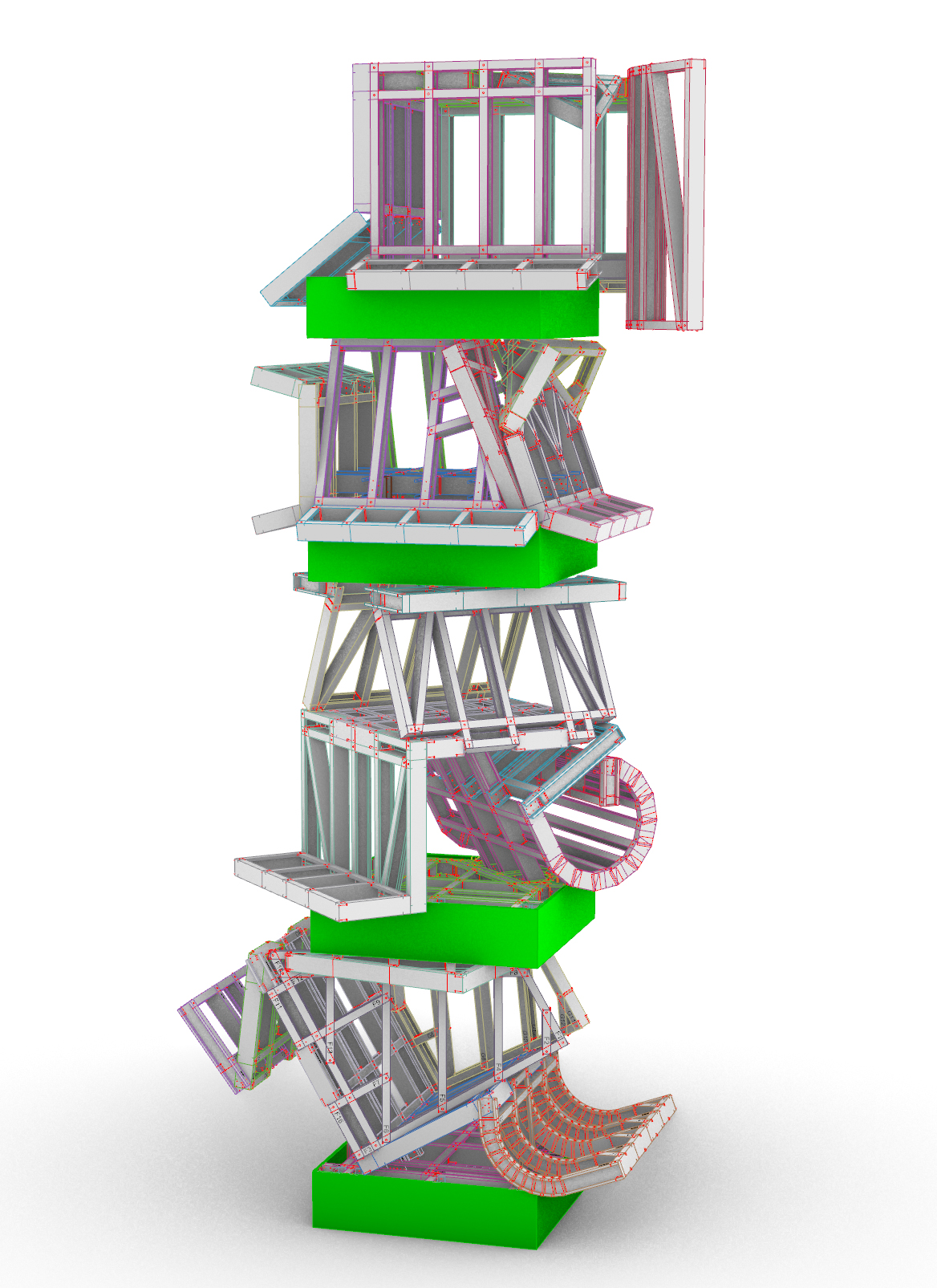
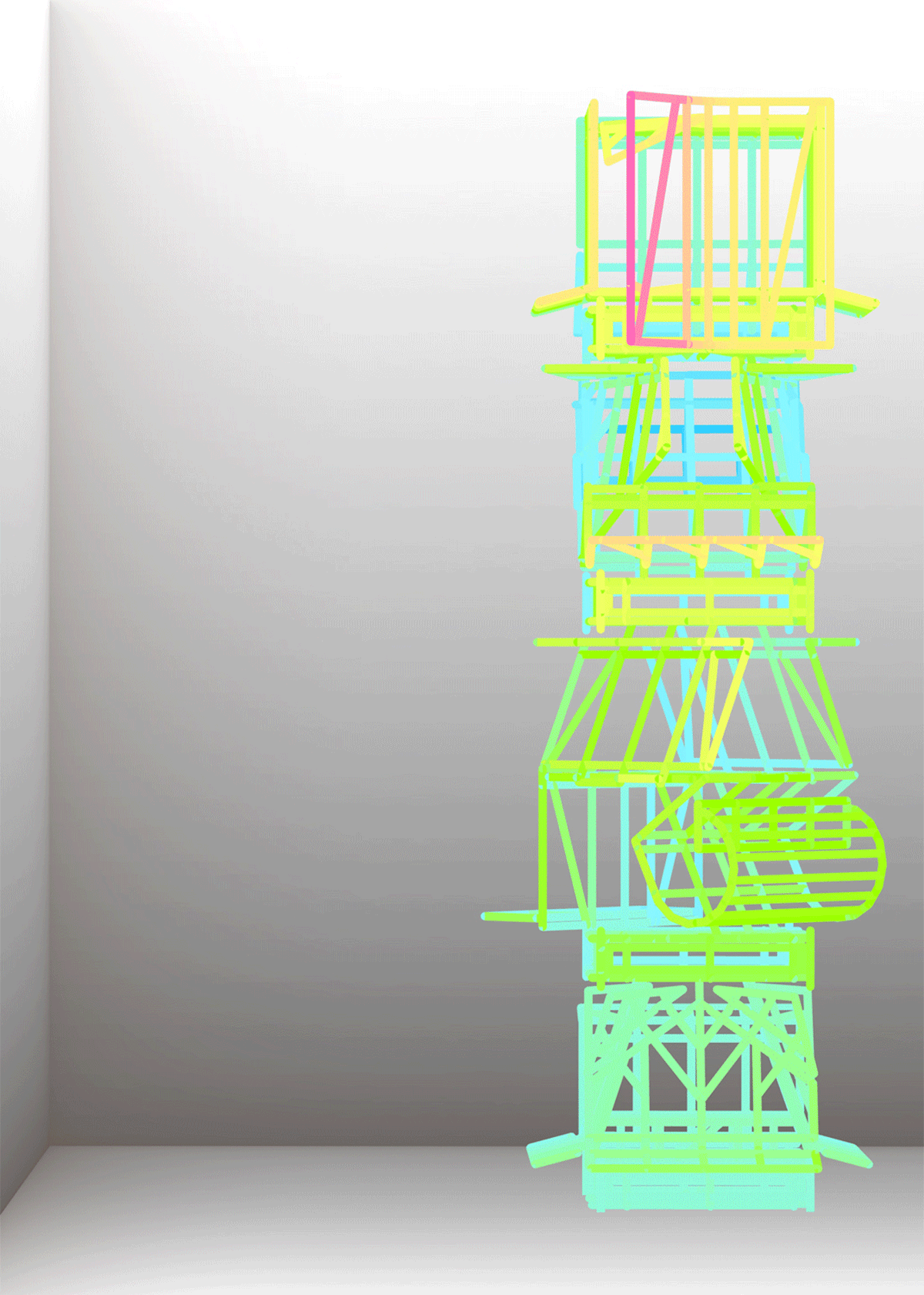
As a coda to the project, the team asked us to make use of artificial intelligence as part of the design process. Instead of using AI to dream new forms, we wondered what would happen if we used it as the world’s biggest audience? As architects and fabricators, we have plenty of ideas for buildings. What’s more mysterious to us is how people react to these, interpret them, and decide whether or not they are suitable to inhabit. If the large language models are compilations of our collective writing, it makes sense to think of them as an aggregate of how people see, interpret, and judge. That’s how we use ChatGPT: as a mass client.
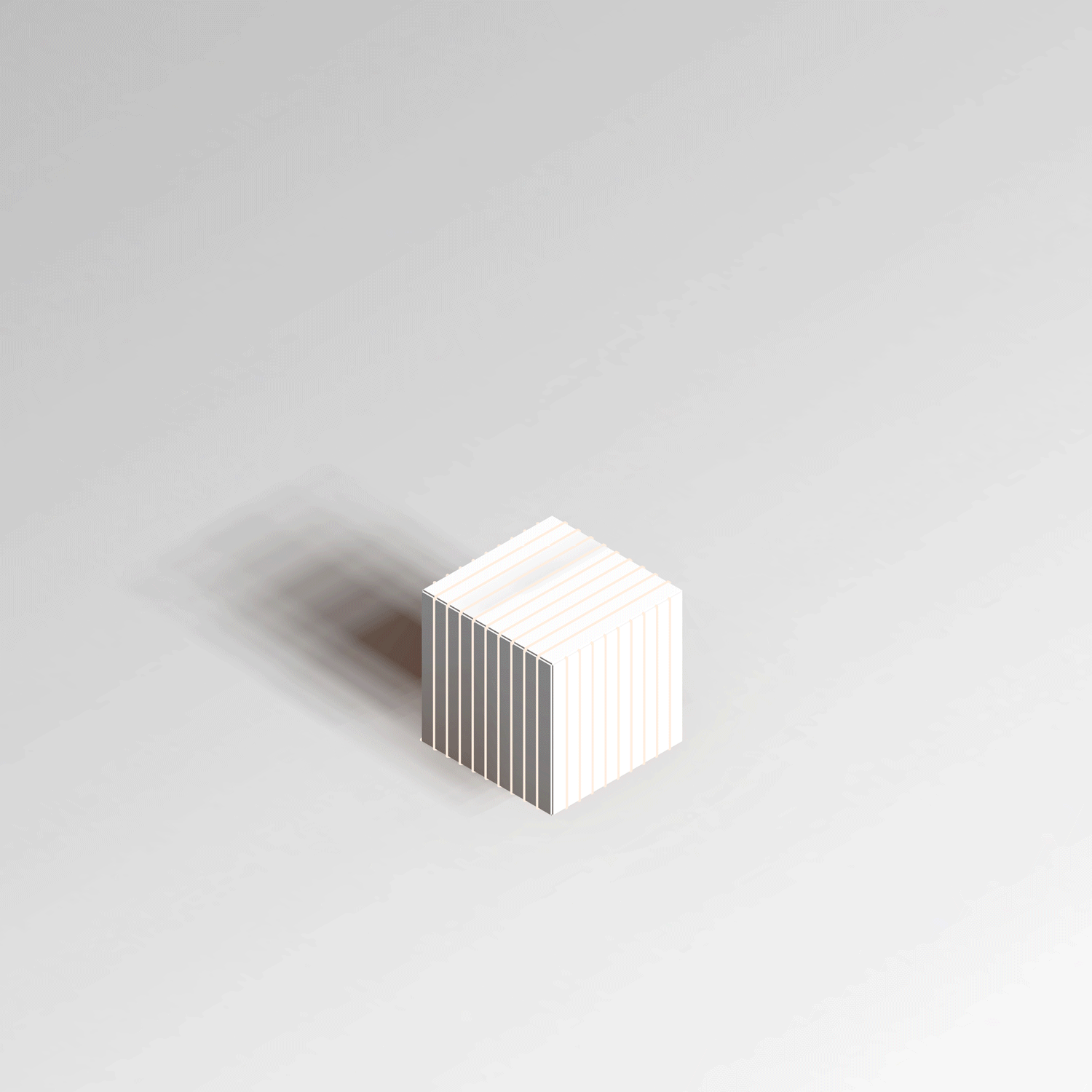
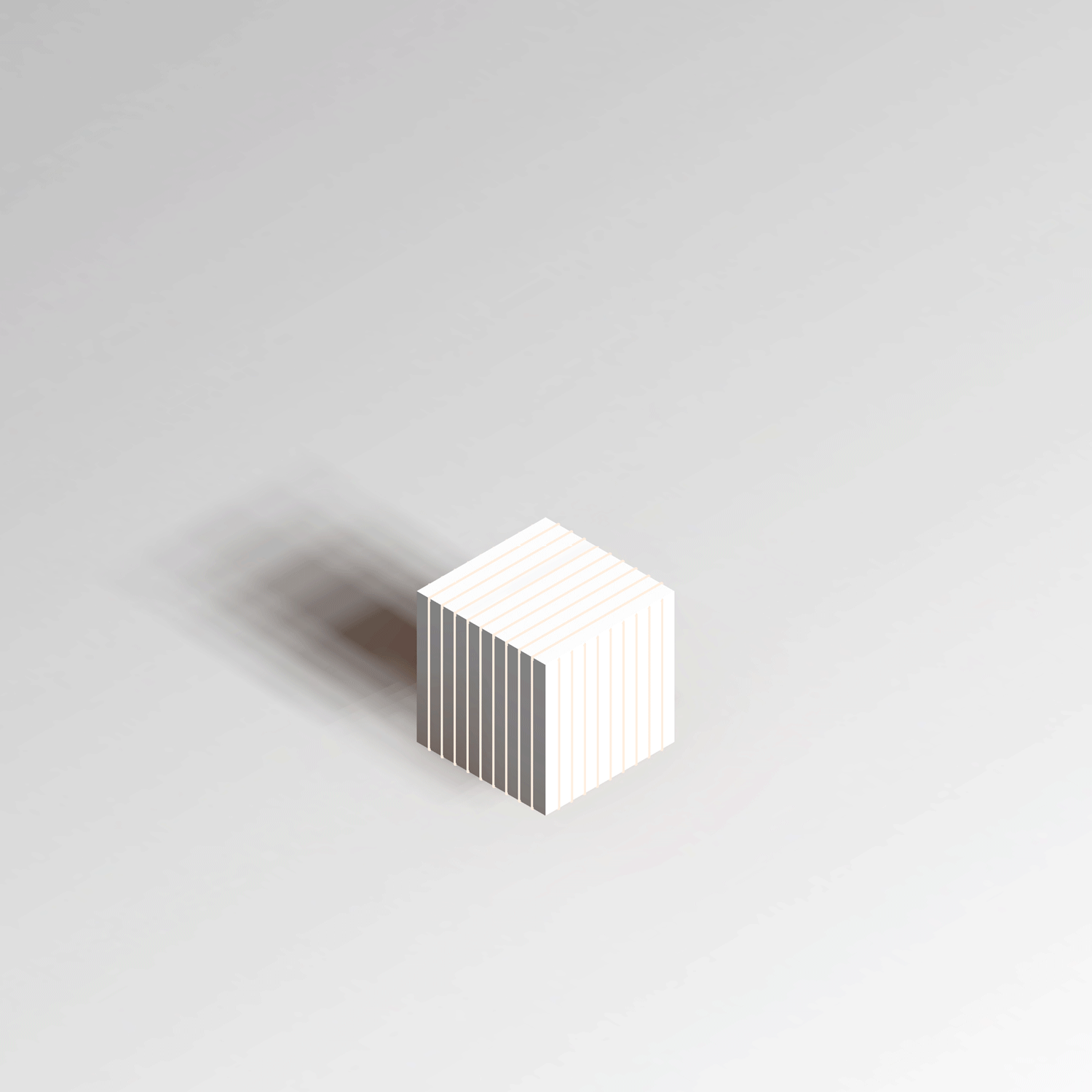
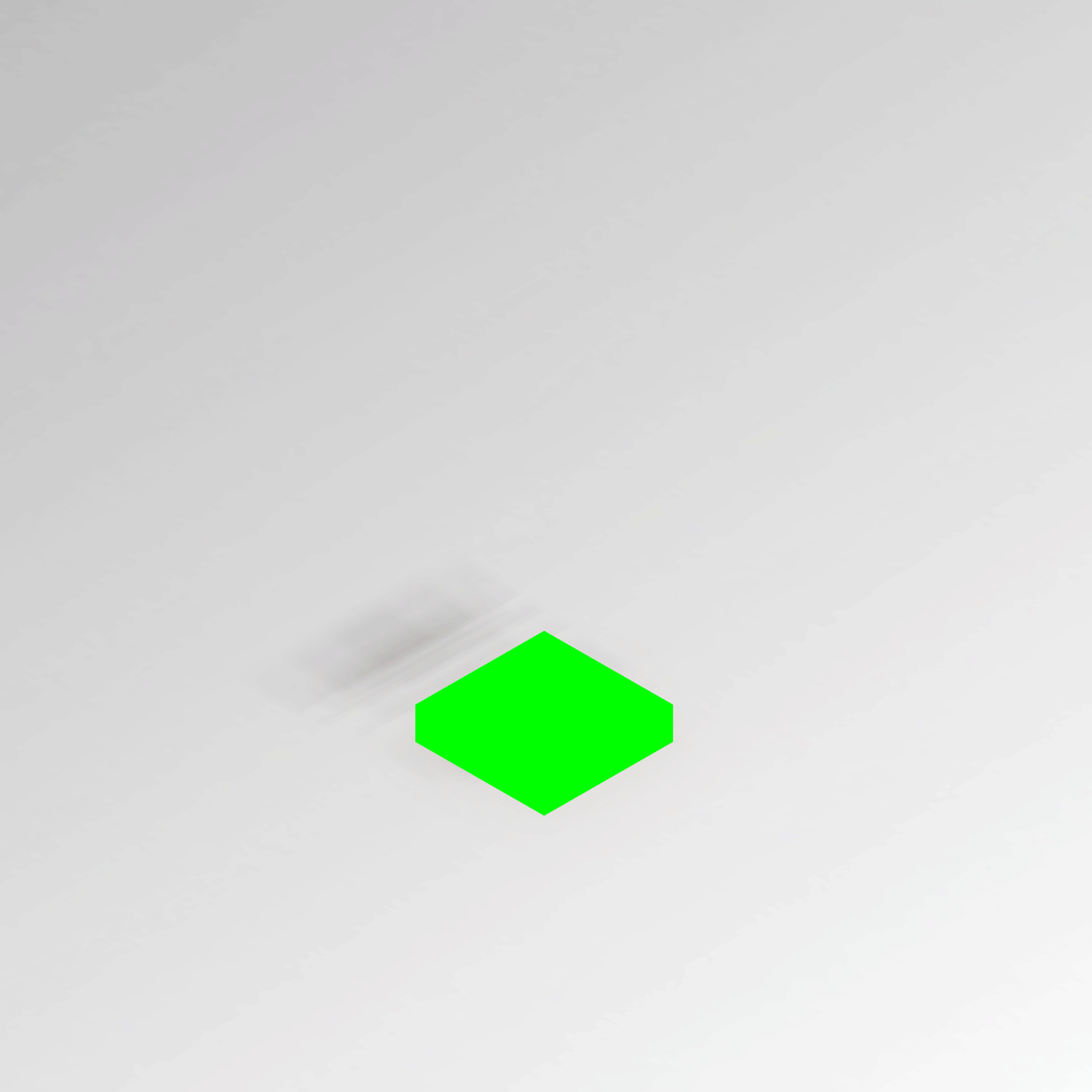
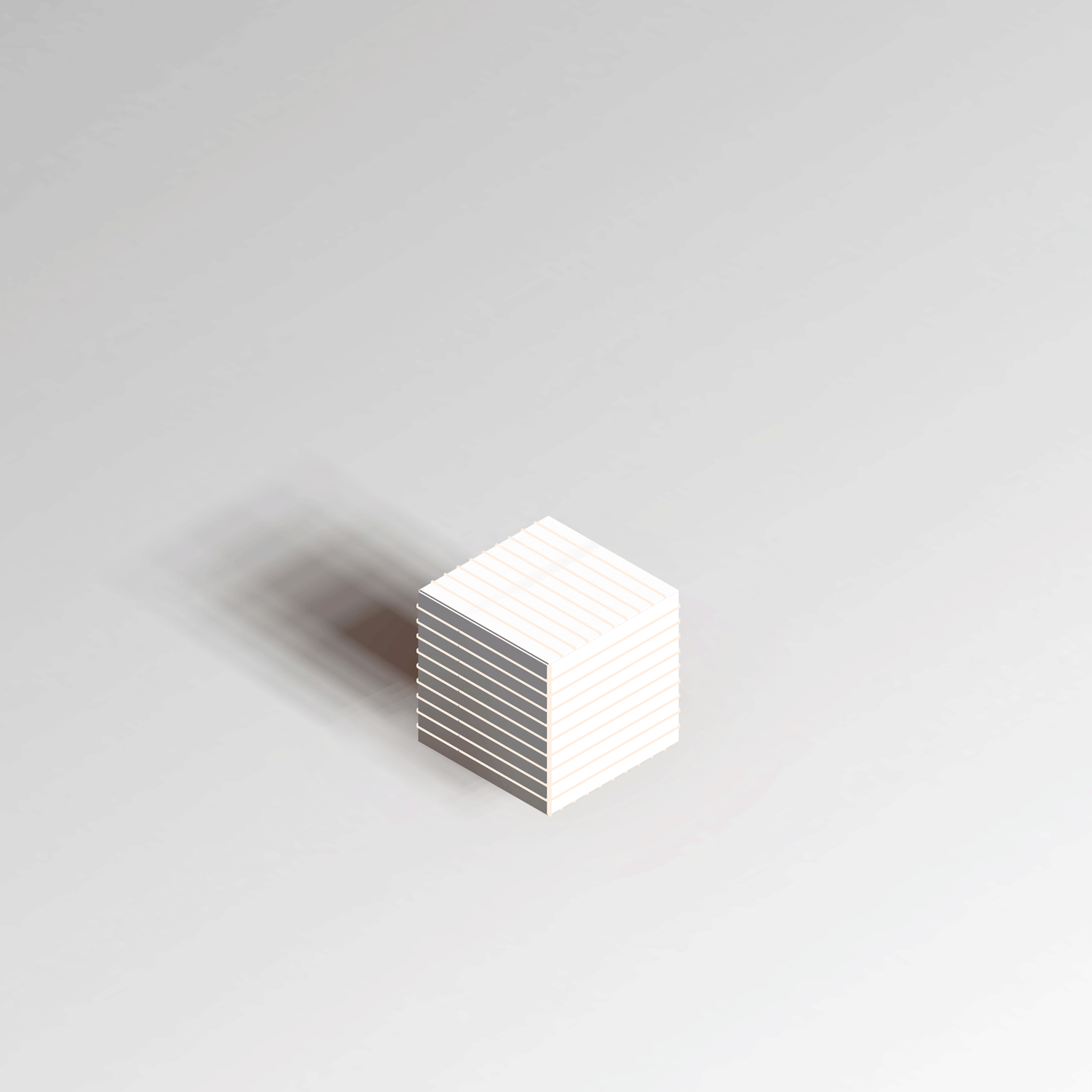
For a collaboration between The LADG and Stud-IO, this meant asking ChatGPT to help us understand what makes a good box. Buildings, after all, are essentially hollow boxes big enough for people to get inside, and this is especially true in common construction techniques that use light framing. The LADG has a long history of designing progressive buildings using this technique, and Stud-IO has developed technology that expands the limits of framing to make almost any form build-able and cost-effective. With all this capacity to invent and build, the real question is, what will clients accept? As something they can they can live in? Walk into? Not only beautiful, but blank enough to receive their projection of how one lives inside architecture? What are the outer limits of a client’s ability to understand a box?
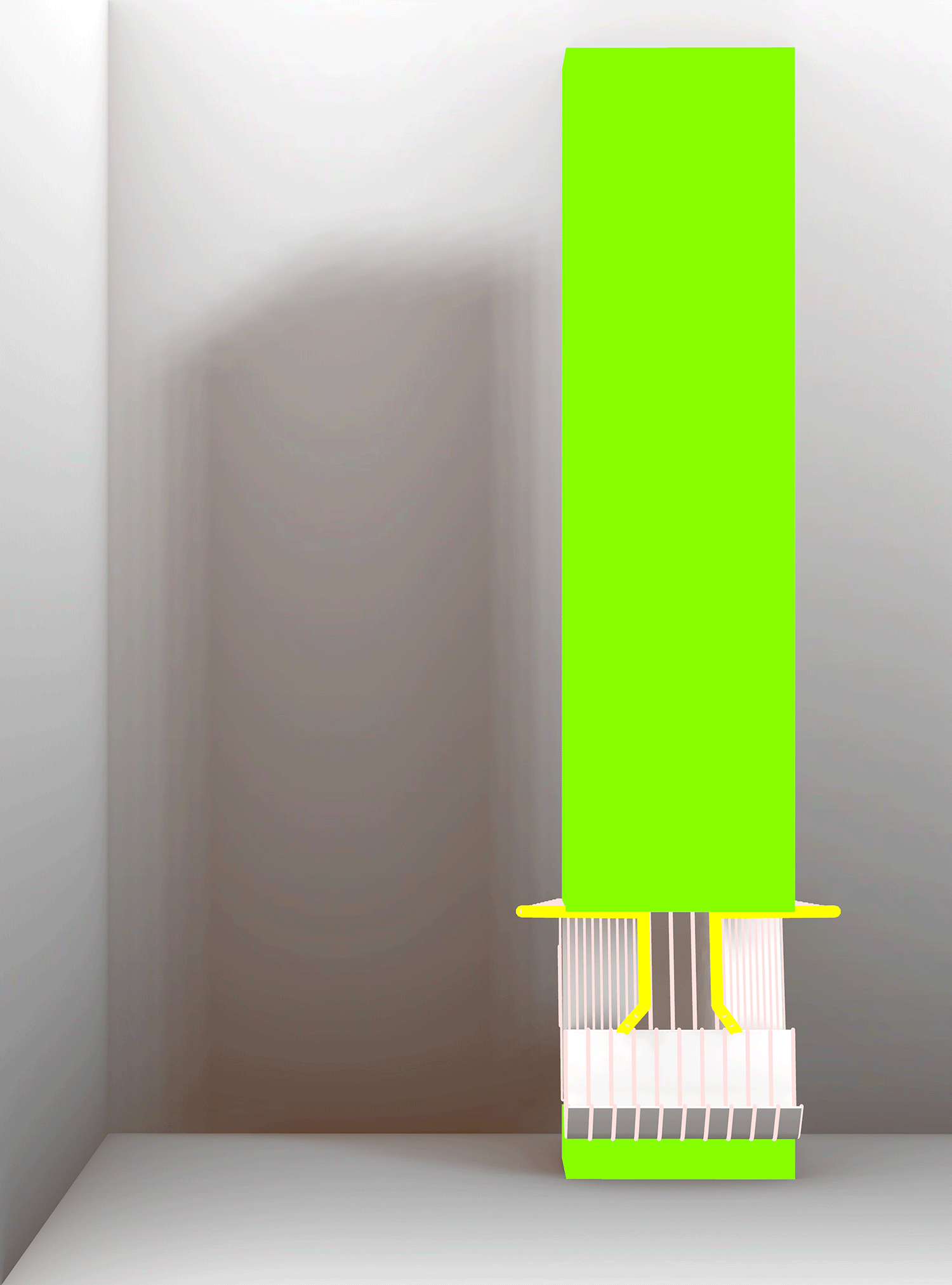
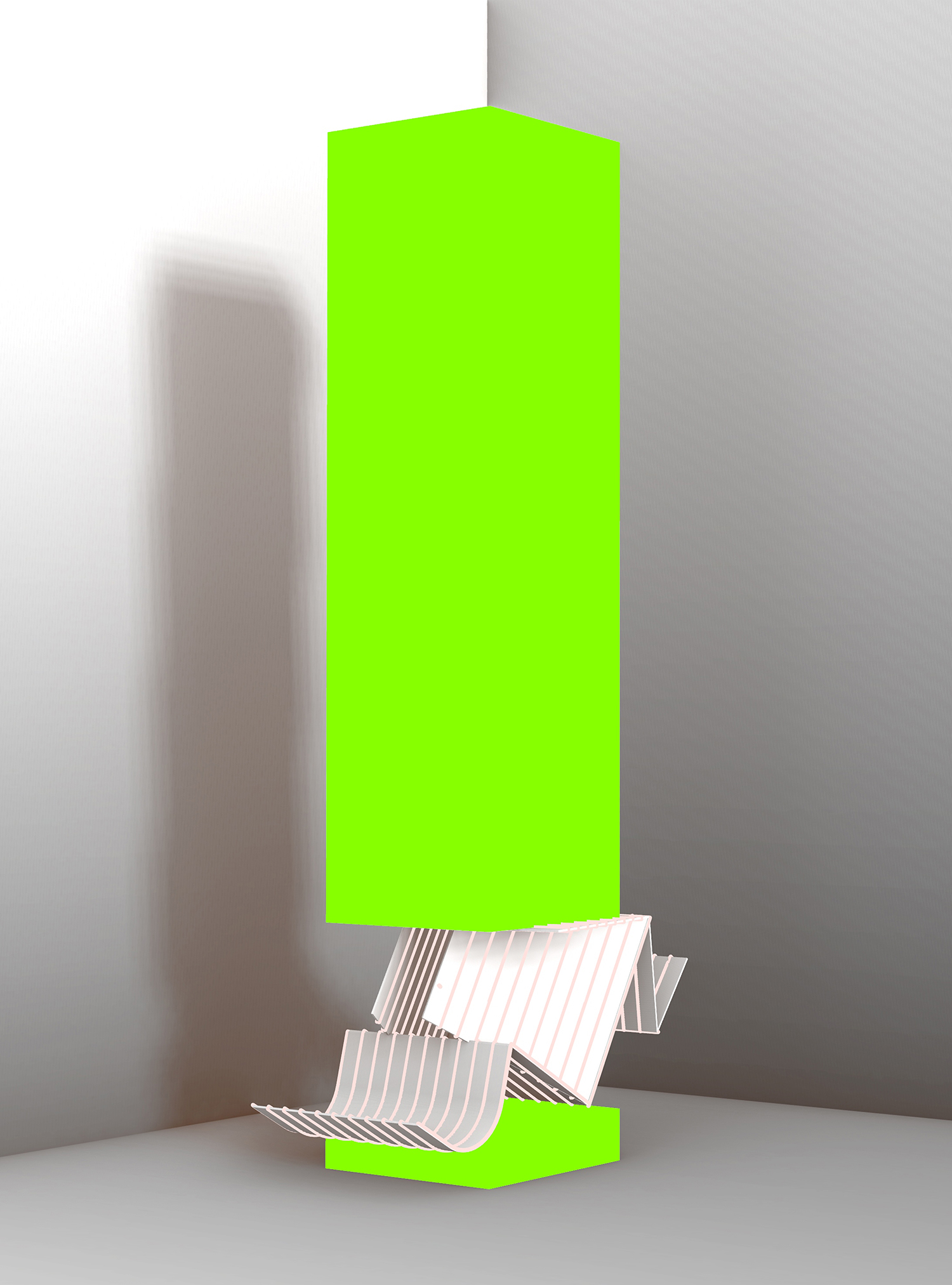


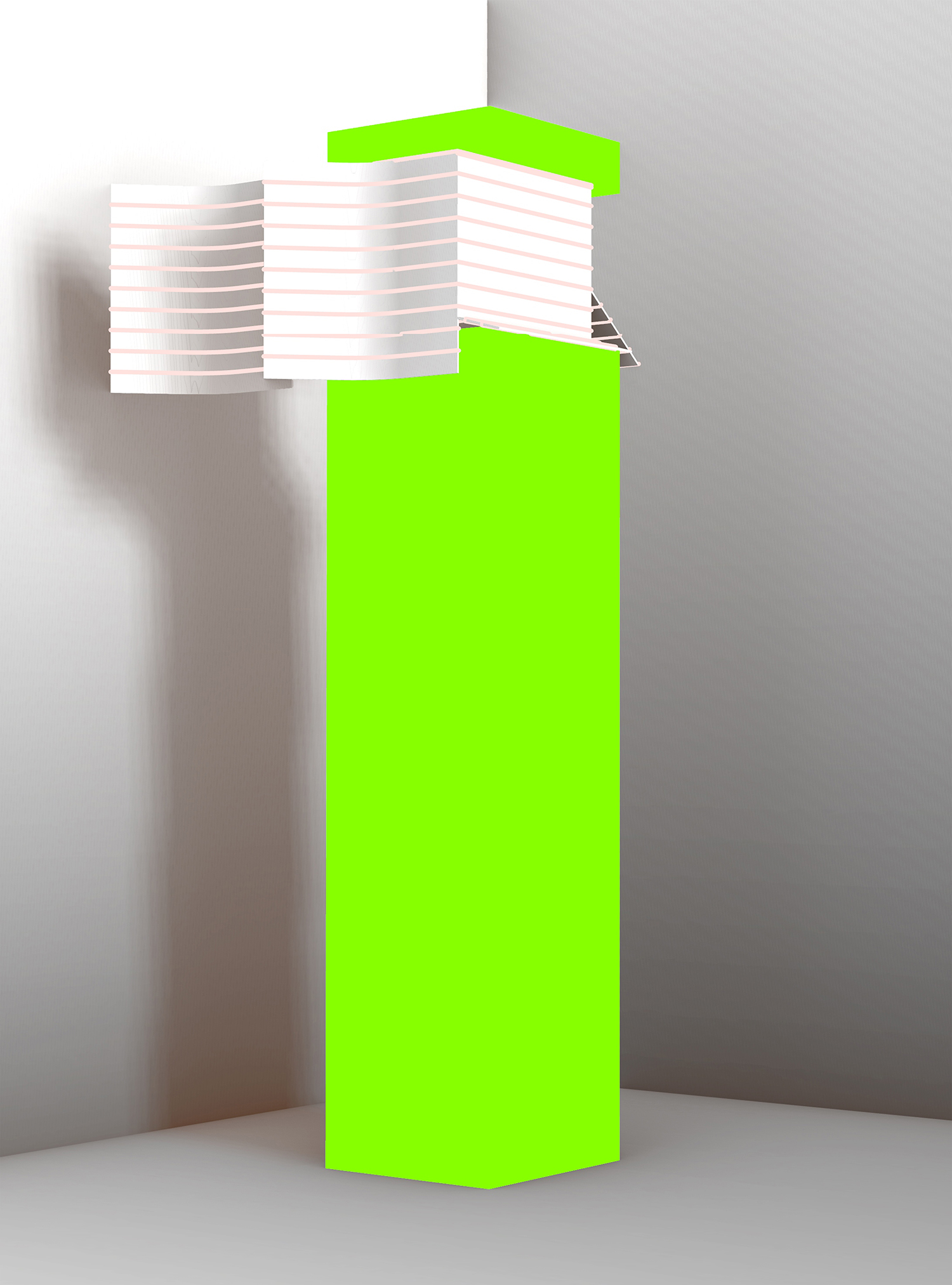
So we wrote to ChatGPT.







